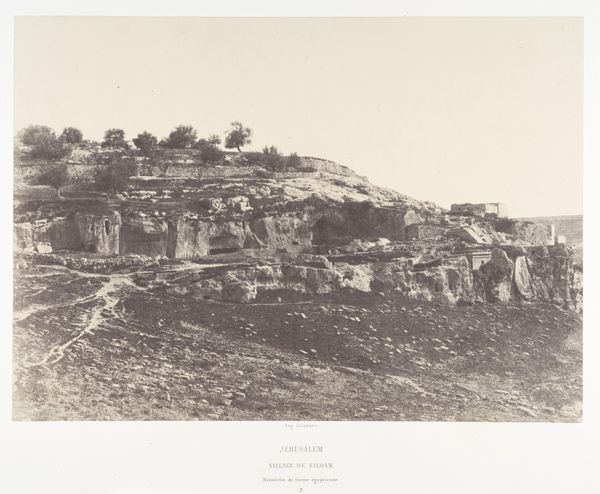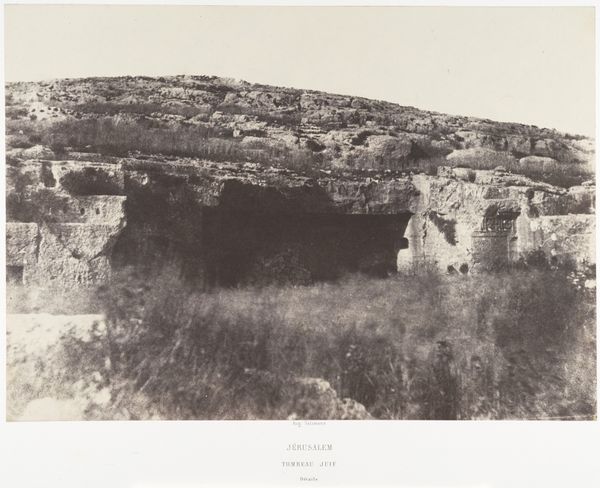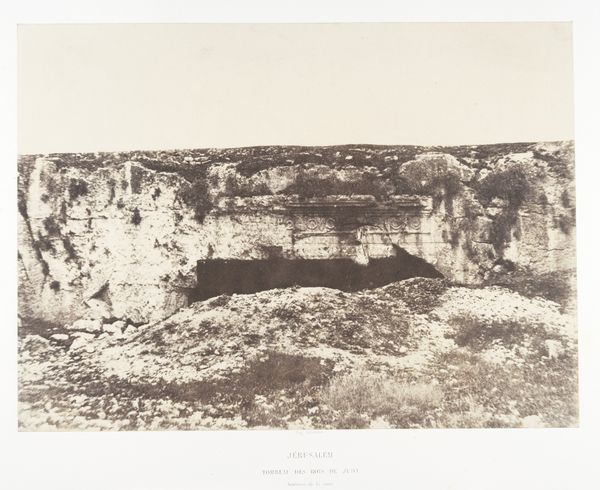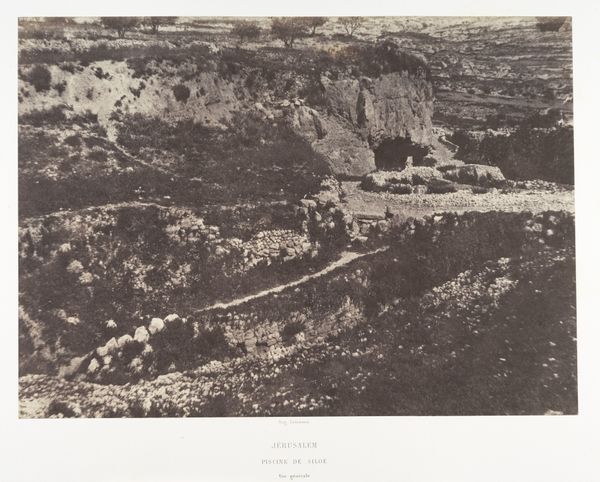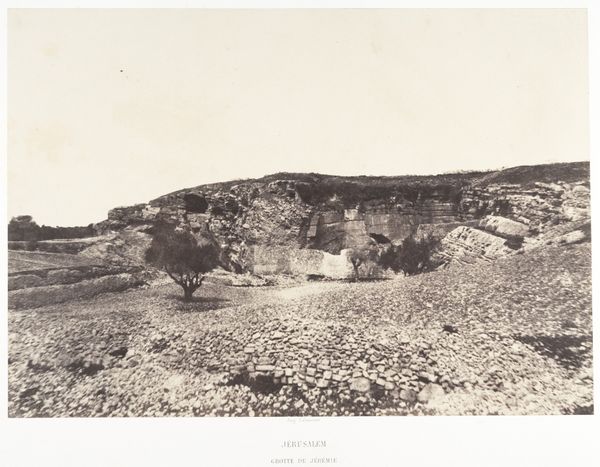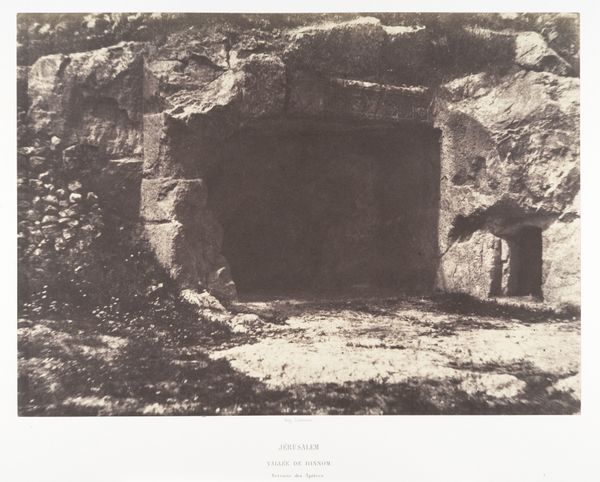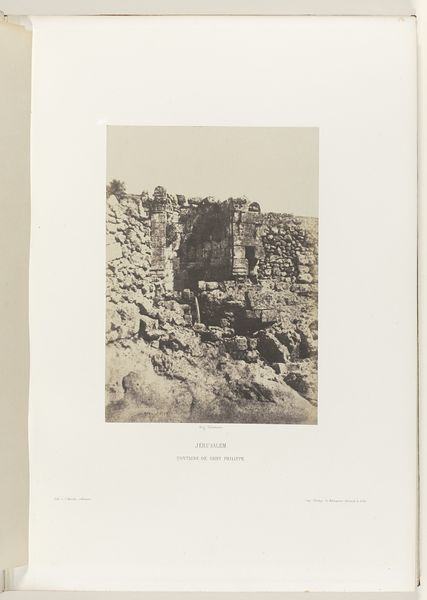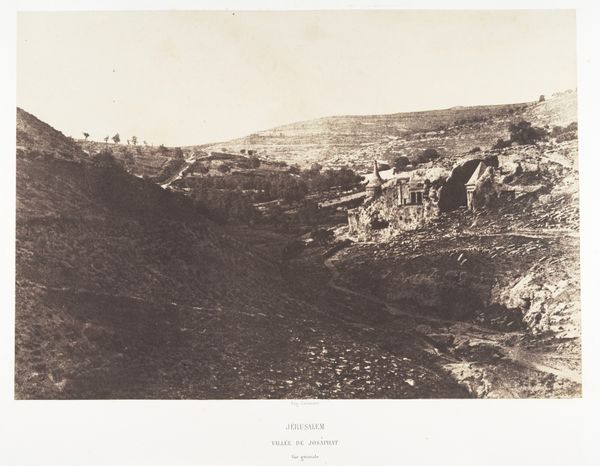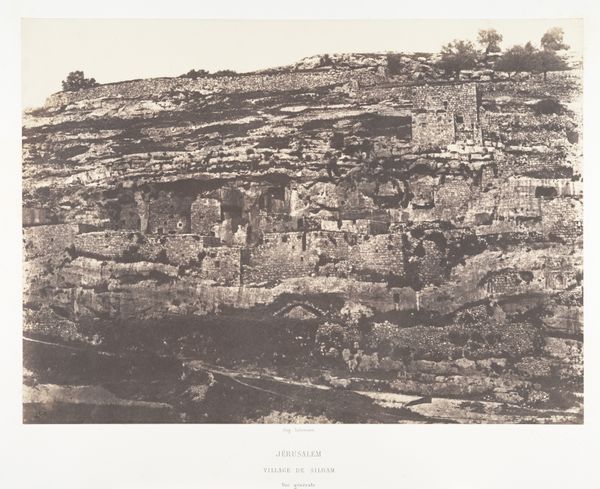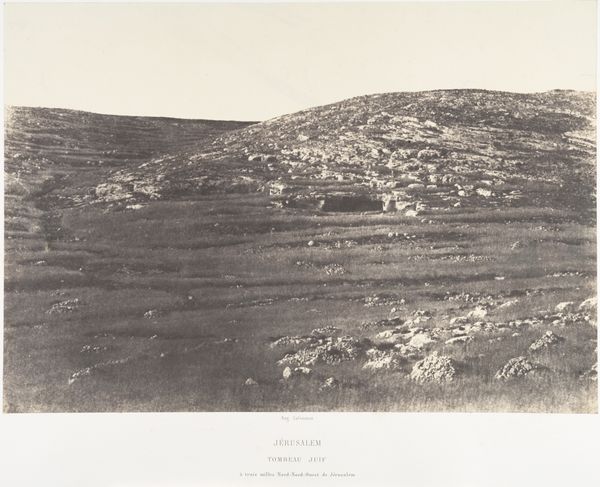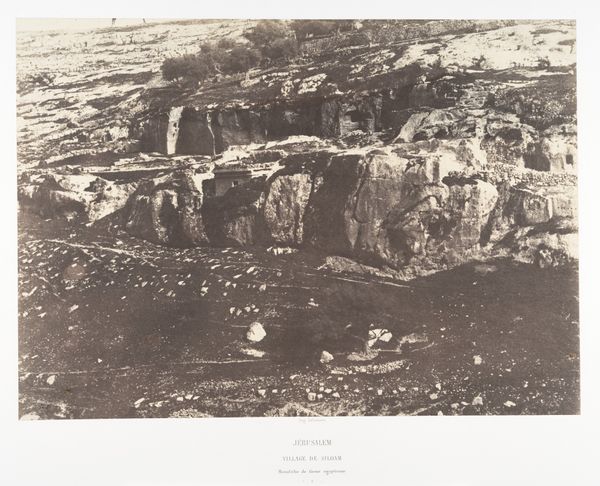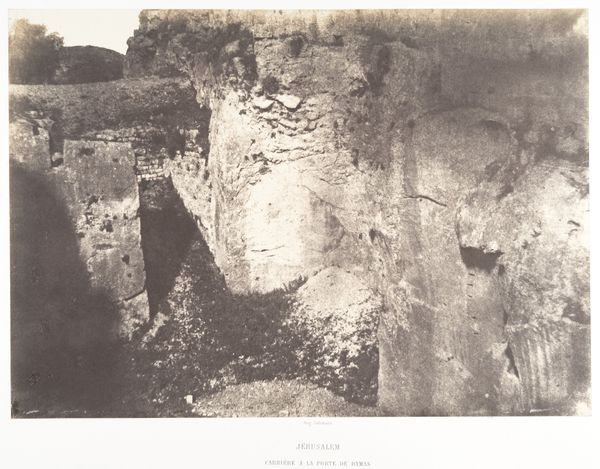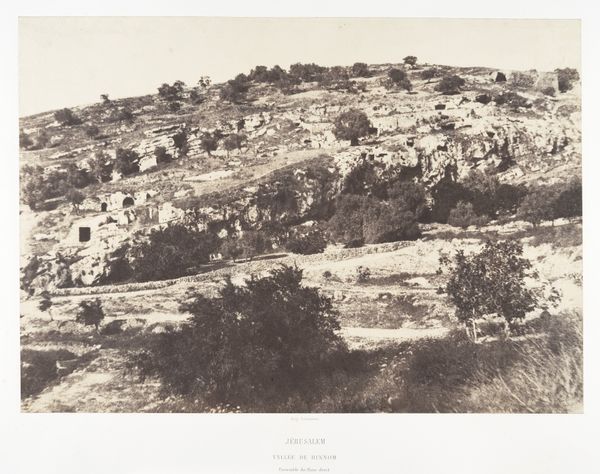
Jérusalem, Vallée de Hinnom, Tombeaux antiques 1854 - 1859
0:00
0:00
print, daguerreotype, photography
# print
#
landscape
#
daguerreotype
#
photography
#
ancient-mediterranean
Dimensions: Image: 23.4 x 33 cm (9 3/16 x 13 in.) Mount: 44.6 x 60.1 cm (17 9/16 x 23 11/16 in.)
Copyright: Public Domain
Curator: What strikes you first about this 1850s photograph by Auguste Salzmann, entitled "Jerusalem, Valley of Hinnom, Ancient Tombs?" Editor: It has such a somber feel, a stark beauty. The contrast between light and shadow carves out the forms, and it gives an ethereal presence to the stone. It almost looks like the earth is exhaling ancient secrets. Curator: Absolutely. The subject is the Hinnom Valley in Jerusalem, focusing on ancient tombs. Now, consider Salzmann’s technique here, working with the then-emerging medium of photography, specifically the daguerreotype and printing. Think about the social and political context of documenting the Holy Land in this way. What stories does the image's materiality and production tell us? Editor: The composition is so fascinating. There's this visual tension, the play between solid and void. See how the dark openings of the tombs contrast with the sun-drenched rock faces? This tension guides the viewer’s eye and structures how we read space. Curator: Indeed. And that control of light! It transcends mere recording, doesn’t it? What was captured in the image wasn’t random but an engagement and artistic intervention with political agendas. Consider his patron; it all feeds into an Orientalist and colonial viewpoint, despite appearing as impartial and technical. Editor: I'm drawn to the textural qualities, the granularity of the rock itself rendered visible through the photographic process. This textural reality infuses the photograph with its sense of permanence. And then you contrast the hard architecture of the tombs with the organic slopes. What do you suppose is going on in the composition itself? Curator: I suppose there’s a tension. The chemical processes to create this photograph had significant labor implications, even more, perhaps, in that landscape and era. Salzmann chose his location to give significance, which in turn serves specific purposes: colonial, scientific, documentary… Editor: Looking at it now through a more historical, let's say a periodized, lens... allows the eye to take in not only the scene that Saltzmann presented but how such vision serves power. Curator: Precisely. The layers within these prints allow us to read their historical underpinnings in a completely new light.
Comments
No comments
Be the first to comment and join the conversation on the ultimate creative platform.
